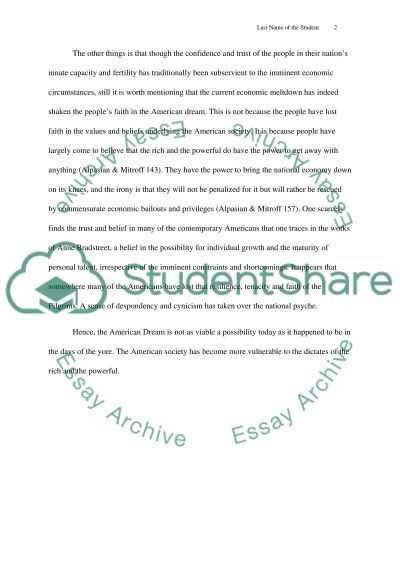
A Mystery of Heroism is a short story written by American author Stephen Crane. The story is set during the American Civil War, and it explores the theme of heroism in the face of adversity. The narrative follows a group of soldiers stationed near the front lines, as they struggle with the unbearable heat and thirst. The main character, Private Fred Collins, decides to risk his life by venturing out to a nearby well in order to fetch water for his fellow soldiers.
The story raises several questions about what constitutes heroism and the motivations behind acts of bravery. Through his character’s actions, Crane challenges traditional notions of heroism and presents a more nuanced perspective. Is heroism simply about one’s willingness to sacrifice for others, or is there something deeper at play?
This close reader’s guide aims to provide answers to some of the key questions that arise from A Mystery of Heroism. By analyzing the text, exploring the author’s intentions, and considering the historical context, readers can gain a deeper understanding of the story’s themes and message.
Throughout the guide, readers will delve into the symbolism and imagery used by Crane to convey his ideas, examine the character development of Private Collins, and explore the universal themes of courage, fear, and humanity. By engaging with these questions and ideas, readers can develop their own interpretation of what heroism means in the context of this story and consider how it relates to their own lives.
The theme of war and its impact on individuals
War is a brutal and devastating event that leaves a profound impact on individuals who are involved in it. The story “A Mystery of Heroism” explores the theme of war and the ways it affects the characters, their actions, and their perception of reality.
The main character, Fred Collins, is a soldier on the front lines during the Civil War. His experience of war is portrayed as chaotic, terrifying, and futile. The constant artillery fire, the sounds of bullets whizzing through the air, and the sight of death all around him create an atmosphere of intense fear and desperation. The war has stripped away any sense of heroism or glory, leaving only survival as the primary goal for the soldiers.
Moreover, war not only affects the physical well-being of individuals but also takes a toll on their mental and emotional state. The soldiers are constantly living in a state of fear, constantly aware of the possibility of death. This constant stress and trauma leave lasting psychological scars on the individuals, making it difficult for them to resume a normal life after the war. They become haunted by their experiences, reliving the horrors they witnessed on the battlefield.
The theme of war and its impact on individuals is further explored through the character of Captain Rogers. Despite being an officer, Rogers is not portrayed as a heroic figure. Instead, he is depicted as a deeply flawed individual, driven by his own thirst for personal glory rather than a genuine desire to serve his country. The war has corrupted him, turning him into a manipulative and ruthless leader, willing to sacrifice the lives of his men for his own advancement.
In conclusion, “A Mystery of Heroism” delves into the theme of war and its impact on individuals by highlighting the physical, mental, and emotional toll it takes on the characters. It portrays war as a destructive force that strips away any sense of heroism and glory, leaving only survival as the ultimate goal. The story serves as a powerful reminder of the devastating consequences of war and the profound ways it shapes the lives of those who experience it.
The Symbolism of Water as a Source of Life and Death

Water is a powerful symbol that is often associated with life and sustenance. It is a source of physical nourishment and plays a vital role in the survival of all living beings. In literature, water is frequently used as a metaphor for life itself, representing its vitality, purity, and essential nature. Additionally, water has the power to heal and renew, as it cleanses and replenishes the body.
However, water can also be a symbol of death and destruction. It is capable of taking lives, as seen in devastating floods or drowning accidents. In this sense, water represents the fragility and vulnerability of human existence. It reminds us of the fine line between life and death, and the unpredictable nature of the world we live in. Water can be both a life-giving force and a deadly threat, highlighting the contrasting and dualistic aspects of human experience.
Water as a symbol of life:
- Water is essential for the survival of all living beings.
- It represents purity, vitality, and renewal.
- Water nourishes and sustains life.
- It is often associated with fertility and the cycle of birth, growth, and rejuvenation.
- Water is a source of comfort and solace.
Water as a symbol of death:
- Water can be a destructive force, causing floods, storms, and drowning accidents.
- It represents the fragility and vulnerability of human existence.
- Water reminds us of the unpredictability and transient nature of life.
- It highlights the contrast between life and death.
- Water symbolizes the uncontrollable and mysterious aspects of the natural world.
In conclusion, water serves as a powerful symbol of both life and death. It represents the essentiality of water for sustaining life while also highlighting its potential to cause destruction and take lives. It reflects the dualistic nature of human existence, reminding us of the delicate balance between life and death.
The portrayal of heroism and its complexities

Heroism is often portrayed as a simple and noble act, where individuals display courage and selflessness in the face of danger or adversity. However, the portrayal of heroism in literature and other forms of media often highlights the complexities and nuances of this concept. It reveals that heroism is not solely defined by physical bravery, but can also involve moral courage, sacrifice, and the ability to confront one’s own fears and weaknesses.
In the short story “A Mystery of Heroism” by Stephen Crane, the protagonist, Collins, initially appears to exhibit a traditional form of heroism. He bravely ventures into a dangerous battlefield to fetch water for his fellow soldiers, risking his own life in the process. However, as the story unfolds, Crane complicates the portrayal of heroism by delving into Collins’ internal struggles and motivations. Collins is not driven purely by a sense of duty or bravery, but also by his desire for recognition and validation. His actions are influenced by the fear of being seen as a coward rather than a hero.
The complexities of heroism are further highlighted when Collins encounters unexpected challenges during his mission. He is confronted with the horrors of war and witnesses the brutal and senseless violence inflicted upon his comrades. At this moment, Crane raises questions about the true nature of heroism. Is heroism defined by the ability to endure and survive in such horrifying circumstances? Or does it lie in the willingness to question the legitimacy and purpose of war itself?
Overall, the portrayal of heroism and its complexities in “A Mystery of Heroism” reveals that heroism is not a straightforward concept. It can encompass a range of emotions, motivations, and actions. It requires individuals to navigate moral dilemmas, confront their own fears, and question societal norms. True heroism goes beyond external acts of bravery and involves a deep sense of self-reflection and the willingness to challenge the status quo.
The Examination of Fear and Courage in the Face of Danger
Fear and courage are two fundamental emotions that play a crucial role in our lives, especially when faced with danger. Whether it is a life-threatening situation or an internal battle, these emotions can shape our actions and determine our outcome. In the short story “A Mystery of Heroism” by Stephen Crane, the protagonist, Fred Collins, finds himself in the midst of war, where fear and courage become intertwined in his journey.
From the beginning, fear is portrayed as a strong force that consumes the characters. The soldiers are described as being “trembling, famished, and, finally, panic-stricken,” highlighting the overwhelming power fear holds over them. It is a natural instinct to feel fear in the face of danger, and it is what drives many to flee or hide. However, Collins defies this instinct and displays an extraordinary act of courage.
Collins’ decision to risk his life and fetch water serves as a powerful example of courage in the face of danger. Despite witnessing the terror and chaos of war, he manages to quiet his fears and focus on the task at hand. Crane writes, “He walked slowly up to the well, through the bullets, in a blinding haze of smoke that smelled of blood.” This vivid imagery showcases Collins’ bravery and determination. It is evident that he overcomes his fear, even though it still lingers in the back of his mind.
The examination of fear and courage in “A Mystery of Heroism” sheds light on the complexity of human emotions in dire situations. While fear is a natural response, it is the ability to overcome it and exhibit courage that separates heroes from the rest. Collins’ act of fetching water becomes a symbol of his bravery and resilience, defying the odds stacked against him. This story serves as a reminder that true courage is not the absence of fear, but rather the ability to confront it and act despite it, even in the face of immense danger.
The exploration of human nature and the capacity for selflessness

Throughout history, literature has served as a powerful tool for exploring the depths of human nature and the capacity for selflessness. This is particularly evident in the story “A Mystery of Heroism” by Stephen Crane. The story follows a soldier named Collins who, in the midst of a brutal battle, risks his own life to fetch water for his comrades. Crane delves into the complexities of human behavior, shedding light on the underlying motivations that drive individuals to selflessly act in the face of danger and adversity.
One of the key aspects that Crane explores is the innate sense of duty that can override personal fear and self-interest. Collins, despite the chaos and fear surrounding him, feels compelled to help his fellow soldiers by obtaining water. This sense of duty compels him to go beyond his own comfort and safety, highlighting the inherent selflessness that can emerge even in the most dire circumstances.
Furthermore, Crane also emphasizes the transformative power of selflessness. Through Collins’ actions, the reader witnesses a profound change within him. Initially, Collins is portrayed as a hesitant and fearful individual. However, as he embarks on his risky journey for water, he undergoes a remarkable transformation. The act of selflessness becomes a catalyst for his growth, enabling him to confront his fears and find a sense of purpose amidst the chaos of war.
In conclusion, “A Mystery of Heroism” serves as a poignant exploration of human nature and the capacity for selflessness. Crane skillfully delves into the depths of human behavior, uncovering the underlying motivations and transformative power that can emerge in challenging circumstances. Through the character of Collins, the story highlights the innate sense of duty and the potential for individuals to rise above their own fears and self-interest to help others. This exploration serves as a reminder of the profound impact that acts of selflessness can have in shaping not only individual lives but also the collective human experience.
The Significance of the Setting in the Story’s Overall Meaning

In Stephen Crane’s short story “A Mystery of Heroism,” the setting plays a crucial role in enhancing the meaning and impact of the narrative. The story takes place during the Civil War near Chancellorsville, where Union and Confederate soldiers clash in a brutal and chaotic battle. The setting not only serves as a backdrop for the events but also functions as a metaphorical representation of the themes of bravery, futility, and the ambiguity of heroism.
The war-torn landscape of Chancellorsville serves as a physical manifestation of the brutal reality faced by the soldiers. Crane vividly describes the decimated surroundings, with dead bodies scattered, fires burning, and the constant sound of gunfire. This vivid portrayal evokes a sense of chaos and destruction, immersing the reader in the harsh and unforgiving atmosphere of war. By immersing the reader in this setting, Crane highlights the extreme circumstances faced by the characters and emphasizes the desperate need for heroism in such a chaotic and senseless environment.
Furthermore, the setting also symbolizes the futility of war and the ambiguity of heroism. Despite the chaos and destruction surrounding them, the soldiers continue to fight, undeterred by the grim reality of the situation. The muddy trenches and constant torrential rain emphasize the endless cycle of violence and suffering, creating a sense of futility in their actions. The setting also emphasizes the ambiguity of heroism, as the characters struggle to define what it truly means to be a hero in such a challenging and morally complex context.
In conclusion, the setting in “A Mystery of Heroism” serves as a powerful and integral element of the story’s overall meaning. By immersing the reader in the war-torn landscape of Chancellorsville, Crane emphasizes the extreme circumstances faced by the characters and the desperate need for heroism. The setting also symbolizes the futility of war and the ambiguity of heroism, highlighting the challenges faced by the characters in defining their actions and motivations. Ultimately, the setting enhances the narrative, adding depth and complexity to the themes explored in the story.